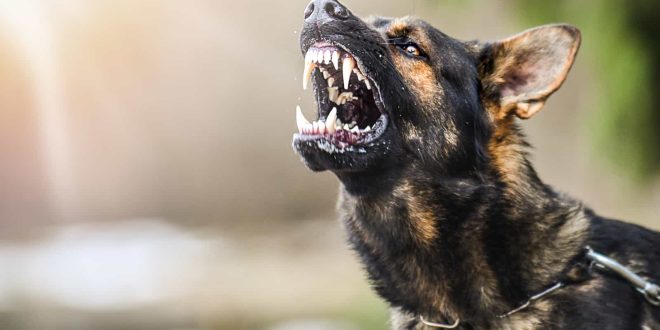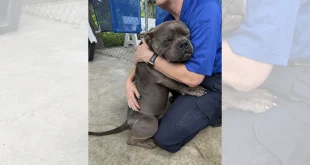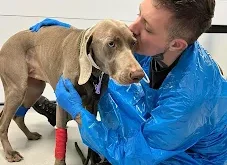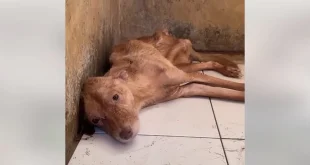Aggressive behavior in dogs can be distressing for both the pet and their owners. Whether your dog displays signs of aggression toward other animals, people, or even inanimate objects, it’s important to address these behaviors early to ensure a safer and more peaceful environment. Fortunately, with patience, understanding, and proper training, most dogs can learn to manage their aggressive tendencies. Here are some effective strategies to help reduce aggressive behavior in your dog.
1. Understand the Root Cause of Aggression
Before attempting to modify your dog’s behavior, it’s essential to understand what triggers their aggression. Aggression can stem from various factors, including fear, territorial behavior, frustration, or even pain. By observing your dog closely, you can determine whether they are reacting out of fear, dominance, or another underlying issue. Once you identify the cause, you can tailor your approach to address the specific trigger.
2. Socialization Is Key
One of the best ways to prevent and reduce aggression is through proper socialization. Socializing your dog from a young age helps them become accustomed to various people, animals, and environments. This reduces fear-based aggression and helps them build positive associations with new experiences. If your dog is older and hasn’t had much exposure to different situations, start slow and positive. Introduce them to calm, well-behaved dogs and people in a controlled environment to build their confidence.
3. Positive Reinforcement Training
Positive reinforcement is one of the most effective methods for modifying unwanted behaviors, including aggression. Rewarding your dog for calm and non-aggressive behaviors with treats, praise, or toys encourages them to repeat these actions. For example, if your dog reacts calmly when meeting a new person, immediately reward them to reinforce the positive behavior. Consistency is key—be sure to reward the desired behavior every time it occurs.
4. Establish Clear Boundaries
Dogs thrive when they understand the rules of their environment. Aggressive behavior often arises when a dog feels uncertain or is unsure of its boundaries. Establishing clear and consistent rules, such as where they can go in the house, when they’re allowed to play, and how they should interact with guests, can help prevent aggressive behaviors. If your dog starts to display aggression, calmly redirect them and reinforce the behavior you want to see instead.
5. Avoid Punishment-Based Training
While it can be tempting to punish a dog for aggressive behavior, this approach often makes the situation worse. Punishment can lead to increased fear, anxiety, or defensive aggression, which could escalate the issue. Instead, focus on redirecting your dog’s attention to positive actions and rewarding those behaviors. In some cases, consulting with a professional dog trainer can help you develop the right strategy without the need for harsh corrections.
6. Use Behavior Modification Techniques
Behavior modification techniques, such as desensitization and counter-conditioning, are effective in helping reduce aggression over time. Desensitization involves gradually exposing your dog to the situation or stimulus that triggers their aggression at a low intensity, and then slowly increasing the intensity as they become more comfortable. Counter-conditioning is the process of pairing the aggressive trigger with something positive, like treats or play, so your dog learns to associate the trigger with good things rather than negative emotions.
7. Manage Stress and Anxiety
Dogs that are anxious or stressed are more likely to become aggressive. Ensuring that your dog has a consistent routine, plenty of physical and mental exercise, and a safe space to retreat to when needed can significantly reduce stress levels. You can also consider using calming products, such as anxiety wraps, pheromone diffusers, or calming music, to help soothe your dog during stressful situations.
8. Consult a Professional
If your dog’s aggression persists or worsens, it may be time to seek help from a professional. A qualified dog trainer or behaviorist can assess your dog’s behavior, identify the triggers, and work with you to develop a personalized behavior modification plan. In some cases, aggression may be related to underlying medical conditions, so it’s also worth consulting with your vet to rule out health issues that could be contributing to the behavior.
9. Neutering or Spaying
In some cases, aggressive behavior can be linked to hormonal changes, particularly in male dogs. Neutering or spaying your dog can help reduce aggression associated with mating instincts, territorial behavior, or dominance issues. While this doesn’t work for all cases of aggression, it can be a helpful tool in managing specific behaviors, especially in dogs that haven’t been fixed.
10. Be Patient and Consistent
Reducing aggressive behavior takes time, consistency, and patience. Your dog may not change overnight, and there may be setbacks along the way. Stay calm, remain consistent in your approach, and continue to reward positive behavior. With time and effort, you can help your dog learn more appropriate ways to cope with stress and frustration, leading to a more balanced and happy pet.
Conclusion
Aggressive behavior in dogs can be challenging, but with the right approach, most dogs can learn to manage their aggression. By understanding the root cause, using positive reinforcement, and seeking professional guidance when necessary, you can help your dog become a well-mannered and confident companion. Always remember, patience is key, and creating a safe, structured environment will go a long way in helping your dog succeed.
 PAWS AND WHISKERS PET CARE
PAWS AND WHISKERS PET CARE




